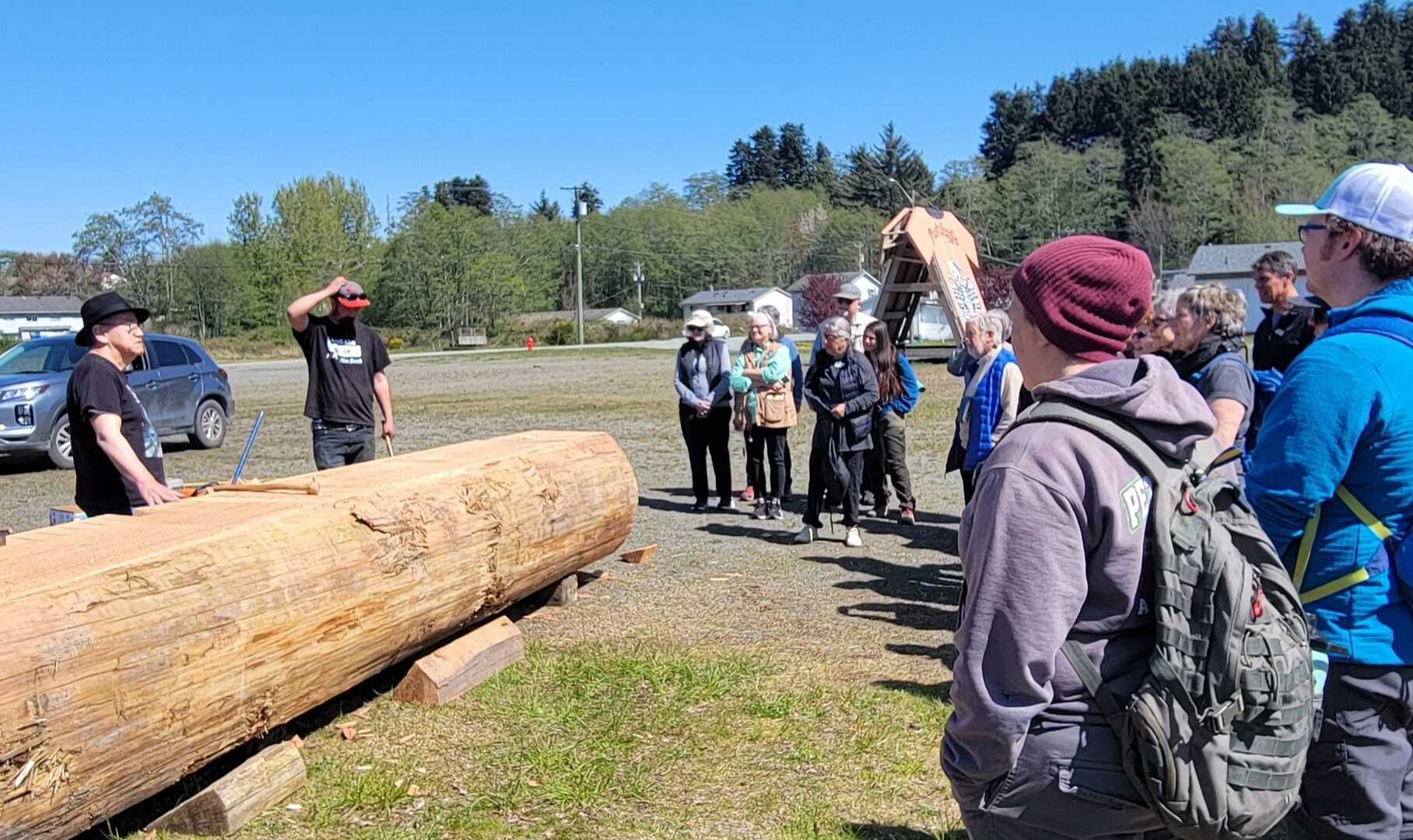We had another fantastic day on National Geographic Sea Lion. Our ship got the opportunity to visit Alert Bay on the unceded territory of the Kwakwaka’wakw First Nations. As guests walked through the Alert Bay Ecological Reserve, undersea specialists Nick Brown and Russell Laman went diving under the pier. Some highlights included footage of giant plumose anemones and basket stars, as those that stayed warm and dry got a chance to see what thrives below the ship. Our visit to the U’mista Cultural Center was a favorite of many; it was fascinating to see the many artifacts returned to Alert Bay after being stolen by Canadian authorities in the 1920s. But the best part of the day was witnessing dances by the T’sasala Cultural Group in the Big House. Generations of families were present and dancing together after years of having to hide their cultural traditions, reminding everyone of the importance of supporting our communities and youth.
- Daily Expedition Reports
- 19 Apr 2024
Alert Bay, 4/19/2024, National Geographic Sea Lion
- Aboard the National Geographic Sea Lion
- Canada
Emily Mall, Naturalist
Emily proudly grew up in the state of Michigan, doing whatever she could to experience and get to know our natural world. She carries a degree in zoology and public policy and worked in an agroecology lab throughout her time in school. Discovering th...
Read MoreShare Report
Voyage to Alaska, British Columbia and Haida Gwaii
VIEW ITINERARYRelated Reports
5/11/2025
Read
National Geographic Sea Bird
Glacier Bay National Park
We had a phenomenal day at Glacier Bay National Park. The sun was out, as was the wildlife. The bow was the place to be. Please enjoy the dialogue of the day from the bow: Ah, Lovely Sunrise. Dall’s porpoise! Killer whales! Oo, swans! Calving center! Bald eagle on ice. Brown bear, That’s a big one. Bald eagle in nest. I wish someone would find me a marmot. Marmot at 10! Where? Do you see that crack in the rock? To the left you’ll see a tree. Now go below the tree to the round rock. 6 goats plus bonus outcast goat. Low goats on ledge, wedged in nicely. Goats, goats everywhere, and a marmot here or there. Two puffins. Nice beak action. It’s like “I Spy” out here. Low goat at 11. Oh, really low goat. Oh, yea that’s a fella. Goats looking right at us, folks, good goat face. Oh, and whale spots at 1. Oh boy, I’m exhausted. That’s ok, take it one goat at a time. There’s a spout off the point. Classic humpback. Oh, glaucous winged gulls nesting at 2. And otters! Fly by puffins! Porpoising harbor porpoise! Needless to say, we had a good time. Photo by Shannon Malone
5/10/2025
Read
National Geographic Sea Bird
Tracy Arm
As we continued our way north through Alaska, we had a favorite stop of mine in Tracy Arm-Fords Terror Wilderness. We had a rainy day, which I enjoy because we can see at higher elevations since the rain turns to snow and, in turn, the snow feeds the absorption zone of the Sawyer Glaciers. We went out in the Zodiacs and navigated around the icebergs and bergy bits, even collecting a piece for the ice melt-off challenge. Once underway out of Tracy Arm, we saw some humpback whales. One whale had an entanglement of line on its fluke. The line was causing an obvious cut to the marine mammal. The correct authorities were notified about the condition of the whale and location of the sighting. Hopefully the whale will be assisted soon and the entanglement removed. Several other humpbacks were seen shortly after, luckily no entanglements on these. They were demonstrating surface feeding behavior, with one lunge feeding and the other making bubbles to catch its prey.







